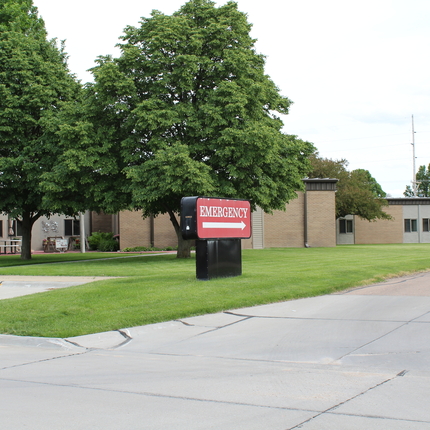Jillian Linster, interim policy director, [email protected], 402.687.2100, ext. 1018; Teresa Hoffman, senior communications associate, [email protected], 402.687.2100, ext. 1012
LYONS, NEBRASKA – As rural hospitals in Nebraska continue to face financial challenges, a new licensure designation could help keep the doors open at facilities on the brink of closing, according to a new white paper released today by the Center for Rural Affairs.
“Rural hospitals provide vital health care services to their communities,” said Jillian Linster, interim policy director for the Center. “When hospitals close, it hurts community health care and the local economy and harms the lives and livelihoods of residents.”
“A Tool for Rural Health Care in Nebraska: The Rural Emergency Hospital Designation,” written by Linster, outlines the designation and the potential impact of Rural Emergency Hospital (REH) facilities on maintaining health care access in rural Nebraska. The paper also examines the status of rural hospital services in the state.
Created by Congress in late 2020, the REH designation went into effect in 2023 for states passing legislation to regulate the health care provider type. Nebraska is one of just 13 states with laws in place; however, there are currently no REH-designated hospitals in the state.
A hospital operating under an REH license receives several financial benefits from the federal government, including a 5% increase in Medicare reimbursement and a monthly facility payment. The funds are intended to offset the costs of running an REH and enable the rural hospital to remain open to provide emergency services to the community when it might otherwise be forced to close.
To be eligible for REH conversion, a rural hospital must have been open on Dec. 27, 2020; maintain no more than 50 beds; and employ sufficient staff to provide around-the-clock emergency services and adequate patient observation. Once converted to an REH, the facility is prohibited from providing inpatient care. While the hospital may offer some outpatient services, the average patient visit must not exceed 24 hours. An REH also must have a transfer agreement with a high-level trauma center.
Categorized by the type of Medicare reimbursement they receive, Nebraska currently has 71 rural hospitals operating under two designations: Eight are Prospective Payment System hospitals, which receive Medicare payments on the basis of a fixed, predetermined amount; and 63 are Critical Access Hospitals (CAHs), which receive flexible, cost-based reimbursement.
While the REH designation comes with restrictions, Linster said it provides a useful option for vulnerable facilities, the number of which has steadily increased in recent decades. In the past nine years, two Nebraska CAHs—Tilden Community Hospital and MercyOne Oakland Medical Center—have closed. Linster said the most recent data suggests that at least two other rural hospitals in the state are at imminent risk of closing.
“Even with restrictions on inpatient care, it is better for a rural community to have some emergency services locally available than to have no health care at all,” she said. “Although this new facility designation is not a universal solution to the problems faced by rural health care providers, it does provide a useful tool to help address existing challenges.”
To read more about the REH designation and rural hospitals in Nebraska, view and download “A Tool for Rural Health Care in Nebraska: The Rural Emergency Hospital Designation” at cfra.org/publications.





